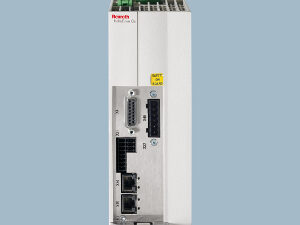The Fieldbus Foundation is one of the only automation industry organizations with a registration program requiring mandatory testing of critical elements of its technology.
The Fieldbus Foundation is one of the only automation industry organizations with a registration program requiring mandatory testing of critical elements of its technology. Today, our testing and registration effort encompasses Foundation Fieldbus host systems and field devices, as well as physical layer components such as power supplies and device couplers.
One of the founding principles of the Fieldbus Foundation is the support of interoperability – the ability to operate multiple devices from multiple manufacturers, in the same system, without loss of functionality. The testing and registration process at the Foundation is the key to interoperability. With Foundation Fieldbus, interoperability is made possible by the fact that devices and software must conform to the same standard.
Host registration provides an extra measure of confidence that fieldbus systems incorporate the robust functionality of Foundation technology and are able to function as part of an open, interoperable control system. The host has been of particular concern in the past because it is the key element at the system level and can determine the success or failure of a fieldbus project. If your host is not registered and tested, you are taking some unnecessary chances and have no way of knowing if your host will work with a wide range of H1 and HSE devices from different suppliers.
Testing and registration requires good stewardship, especially when the specification continues to evolve like Foundation Fieldbus does. A good example of this is the addition of the NAMUR NE-107 recommendations for device diagnostics. Fieldbus Foundation and NAMUR, an international user association for automation technology in process industries, collaborated on enhancements to Foundation technology, which improved its usability. A key objective of this work was to unify the integration of fieldbus self-monitoring data and ensure the availability of valuable diagnostic information to process plant operators, engineers and technicians.
According to the NAMUR NE107 recommendation, Self-Monitoring and Diagnosis of Field Devices, fieldbus diagnostic results should be reliable and viewed in the context of a given application. The document recommends categorizing internal diagnostics into four standard status signals. (See diagram.) It also stipulates configuration should be free, as reactions to a fault in the device may be very different depending on the user’s requirements. According to NE107, plant operators should only see status signals, with detailed information viewable by device specialists. This facilitates information in context, provided to the right people at the right time, in the right format.
Using the NE107 recommendations for field diagnostics, the Fieldbus Foundation developed a profile specification enhancing the organization, integration, and presentation of device diagnostics within fieldbus systems. The diagnostic profile includes a standard and open interface for reporting all device alarm conditions, and provides a means of categorizing alert conditions by severity. The technology facilitates routing of alerts to appropriate consoles based on user-selectable severity categories. In other words, it sends the right information to the right person at the right time without flooding the operator with alarms that are irrelevant to his duties. It also provides recommended corrective actions and detailed help, as well as an indication of the overall health of the device.
The Foundation continues to evolve our specification as new technologies come along and there are new opportunities to improve on the specification. Testing and registration will continue to evolve along with the specification to ensure that end users can achieve full functionality and interoperability that is the promise of Foundation technology.
Read Larry’s blog at https://foundationfieldbus.blogspot.com



